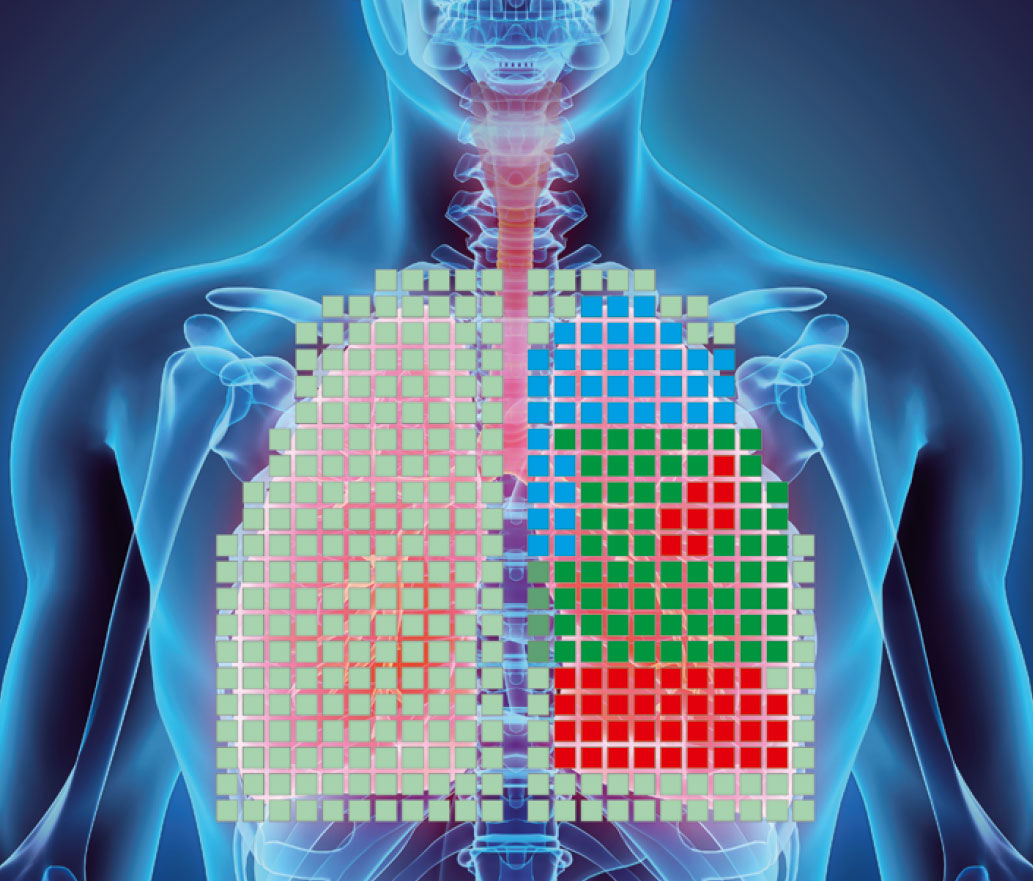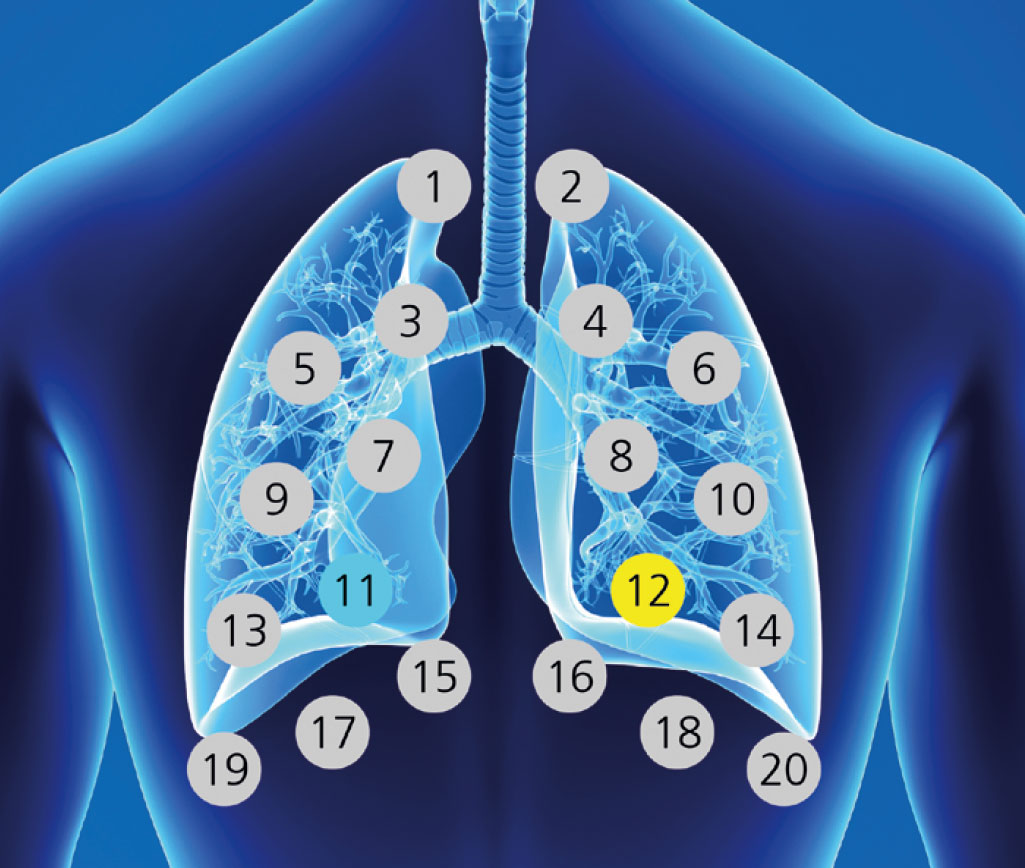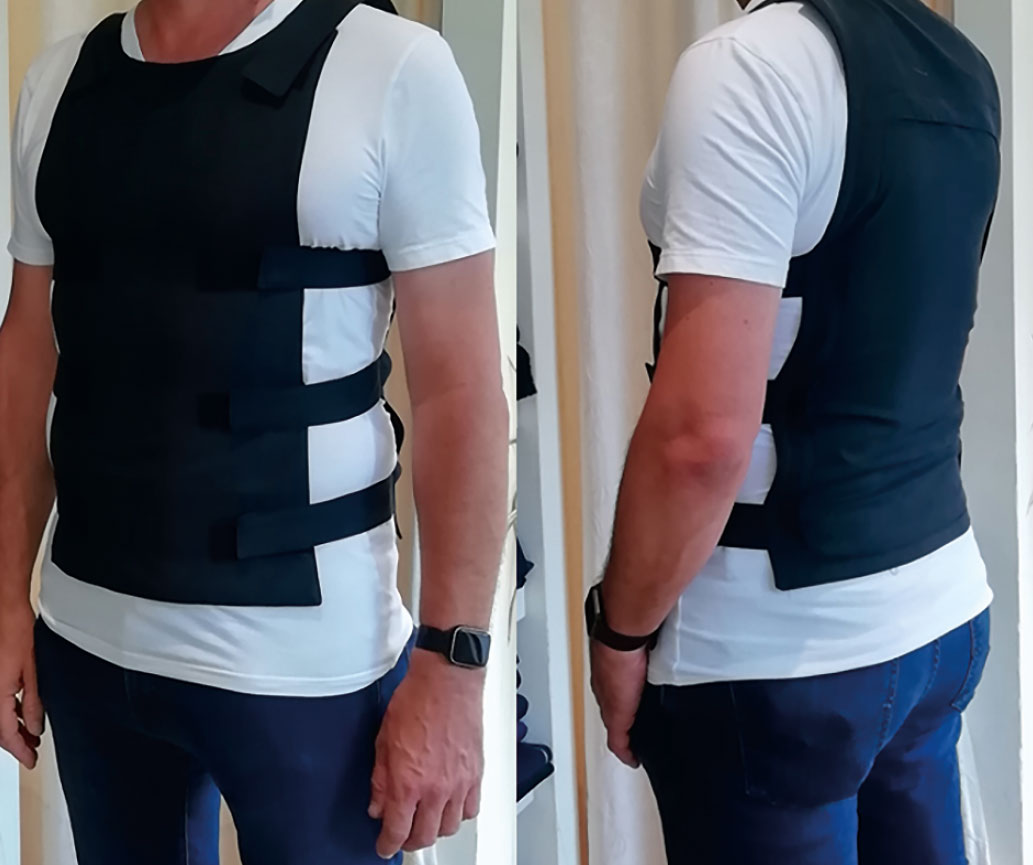
Decentralized monitoring of lung ventilation with Pneumo.Vest
Current research




In Germany, 385,000 patients are hospitalized each year with respiratory problems or lung diseases – more than 60 % of patients require ventilation for longer than 24 hours.
The methods currently in use in intensive care units for monitoring lung function at bedside provide only global information. However, to select the correct ventilation parameters, physicians need a continuous flow of information about the regional distribution of ventilation. Until now, such differentiated lung ventilation data has only been available in the form of snapshots produced with imaging methods, such as thorax CT.
Location-independent patient monitoring
As part of the Fraunhofer anti-Corona project M3Infekt, a system for monitoring Covid-19 patients outside of intensive care units is currently in development. The competencies of nine Fraunhofer institutes as well as clinical partners have been combined to develop a textile vest prototype with integrated acoustic sensors.
These sensors help to assess the ventilation situation of the lungs – initially at 20 evaluation points on the back. Additionally, a “breath-by-breath” analysis of simultaneously recorded acoustic signal data enables continuous monitoring and assessment in real time. This can be used during therapeutic interventions, such as ventilation therapy or for condition assessment in the emergency room.
The project involved developing the individual sensor and miniaturizing it, designing the amplifier circuitry and developing a corresponding circuit board for power supply and for combining the 20 sensors.
These components were integrated into a prototypical textile vest.
The vest was then tested by medical personnel and future users in intensive care at the Magdeburg Clinic. The experiences of these measurements did confirm the benefits of such a medical application.
Into the age of digital care medicine
“Clinical grade wearables” (CGW), when com-bined with medical communication solutions, enable continuous data collection and analysis. Location-independent patient monitoring has significant advantages: in the future, it can be used in regular hospital wards, institutions of long- and short-term care, as well as at home. One important advantage for clinics is that it will make patient monitoring more decentralized, which can help maintain elective surgery schedules even during times of high infection rates and peaks in demand.
The system supports transforming medical care into “4P medicine” (preventive, participatory, personalized, predictive), with decentralized health monitoring.